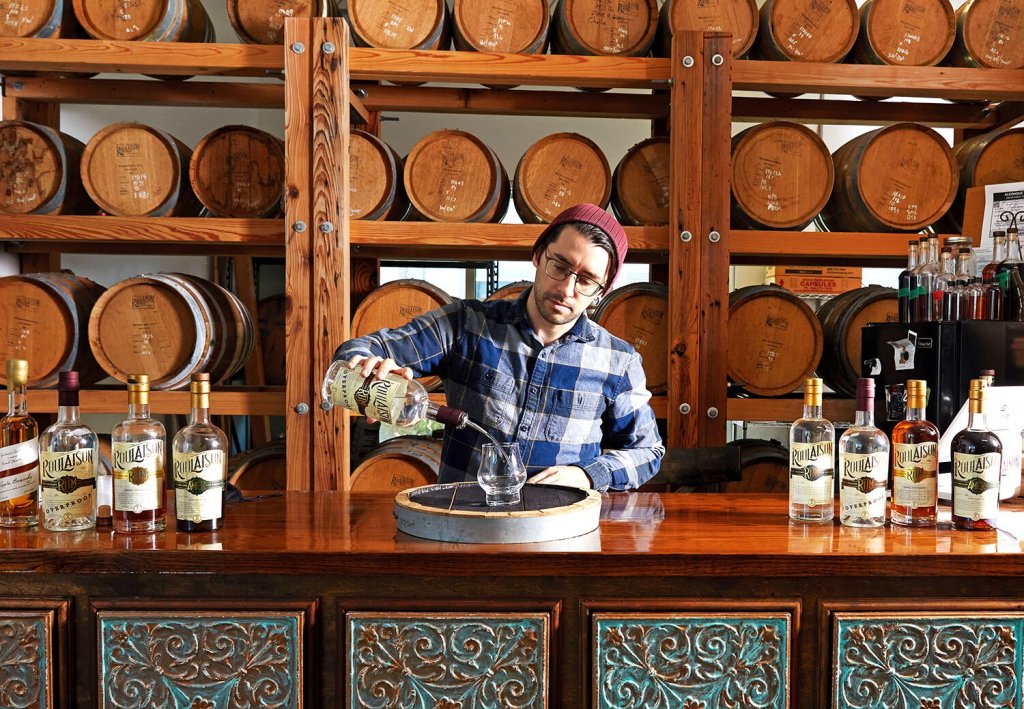One New Orleans distillery is giving rum a home in the U.S.
Published 4:30 pm Monday, February 21, 2022

- Andrew Lohfeld samples some of his products.
Yo ho ho and a bottle of rum… Roulaison Distilling Co. partners Andrew Lohfeld and Patrick Hernandez hatched plans for their operation not on the high seas, but as friends in New York City catching up over drinks in 2013.
Working at New York City’s Kings County Distillery at the time, Lohfeld shared with Hernandez his dream of opening his own distillery to focus on producing a great craft rum. As a Louisiana native, Hernandez knew the perfect place to launch just such a plan, and the duo set out on a research and development trip to New Orleans.
Trending
“I got great perspective on whiskey at Kings County, but as my experience in the spirits industry grew, I realized there was an untapped opportunity with rum,” Lohfeld explains. “There are all these great American whiskey brands and distilleries, which makes it a little hard to compete in that category. The rum segment was much easier to break into, and there’s a better chance to make a real impact in the market.”
The name — a combination of rouler, meaning “to roll” and saison, meaning “season” — honors the micro-distillery’s terroir.
“Roulaison is the French Creole word for the sugarcane harvest,” Lohfeld explains. “’Rolling season’ technically refers to the rolling motion of the grinding wheels that are used to crush the sugarcane. The term is no longer really used in the modern lexicon for sugar production; we found it referenced in an old 1890s sugarcane planting guide.”
The right place at the right time
Along with Florida, Louisiana’s hot and humid climate lends itself readily to sugarcane farming, one of just a few growing regions in America where the crop thrives. And, as sugar is the main ingredient in rum, the territory is a natural fit for a distillery site, an entrepreneurial idea that’s quickly gaining popularity.
“Ten years ago, there were only a few distilleries located in Louisiana, two of which made rum,” Lohfeld says. “Now we’re up to around 35 total.”
With new distilleries popping up all across Florida and Louisiana, Lohfeld hopes to see the creation of a rum trail promotion to drive interest and tourism, similar to the Kentucky Bourbon Trail or Louisville’s Urban Bourbon Trail.
Trending
“The industry is so much stronger now than it was 10 years ago; I can’t help but think about how much further it will come along in another decade,” he ponders. “I think we’re really just on the cusp of developing those necessary relationships with stakeholders, mill workers, farmers and marketing entities.”
Producing a great product
Fresh sugarcane juice is hard to come by outside of major growing regions, leaving rum distilleries not based in Florida or Louisiana to rely on molasses as their only base ingredient. Due to its proximity to sugar mills, Roulaison is fortunate enough to use either fresh sugarcane juice or molasses, which is a concentrated form of sugarcane juice. From there, the basic distilling process is similar to that of other spirits.
“You start off with your sugar source and then add water and yeast, but with rum, you don’t have to convert the more complex starches in grains first like you do with bourbon or rye, so it’s one less step,” Lohfeld describes. “Rum can come off the still a bit higher as well, as high as nearly 190 proof, but ours is at around 155 to 160 proof.”
Because rum has traditionally been imported into America as opposed to being produced domestically, regulation isn’t as strictly controlled as it is with native spirits like whiskey.
“Rum is like the Wild West of spirits,” Lohfeld laughs. “There are no rules about barreling or storage. In some countries, the distillate must spend at least a year aging in wood barrels to be called rum. But in America, rum doesn’t have to be aged at all. You can drink it right off the still.”
How to taste rum
Although the ingredients and process remain fairly consistent across the board, rum does allow opportunities for color customization and flavor development. Depending on the product, drinkers may pick up inherently sweet tasting notes of brown sugar, vanilla, coconut, cinnamon, tropical fruit and other essential flavors.
“Rum has such a great diversity of styles around the world,” Lohfeld says. “Because there are so many different ways to make it, you can hit pretty much every spoke on the flavor wheel. I’ve seen rums compared to whiskeys and brandies; however, you can tweak different aspects with rum to get flavors that you just can’t achieve with other spirits.”
Rum is having a moment — here are 4 cocktails to try at home
When it comes down to the tasting, Lohfeld says the best way to drink rum is however you like it.
“One of my favorite introductions to rum is to make a traditional daiquiri with it and see how it works in that kind of cocktail,” he recommends.
“Or, you can sip it straight like a whiskey, maybe add an ice cube. Bringing the proof down with a little water helps a good craft rum to really open up and release all those great aromatic compounds.”

